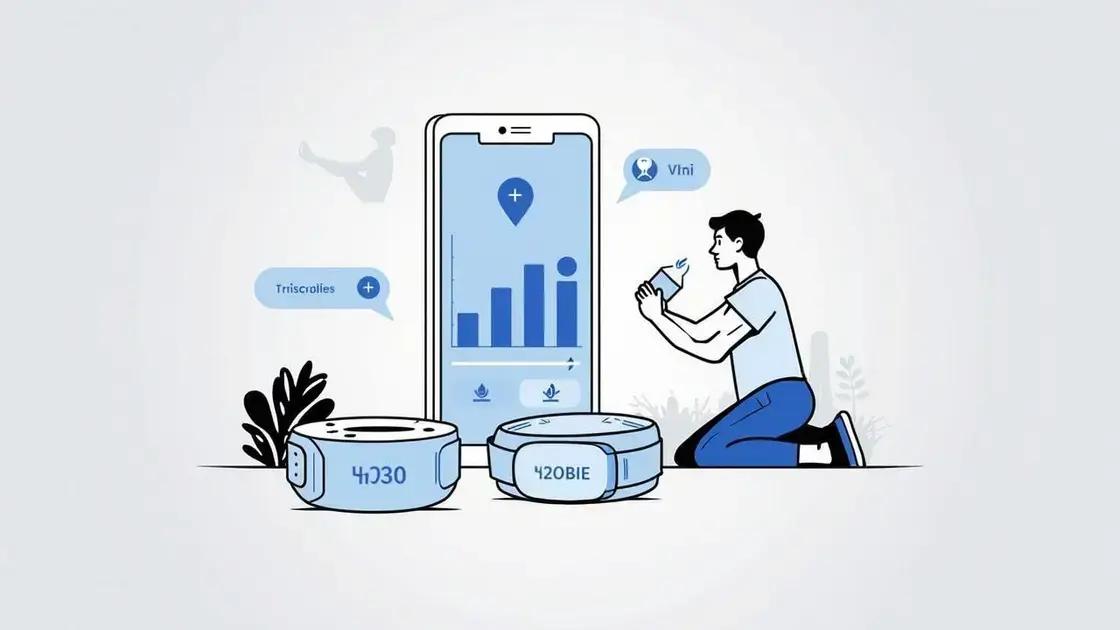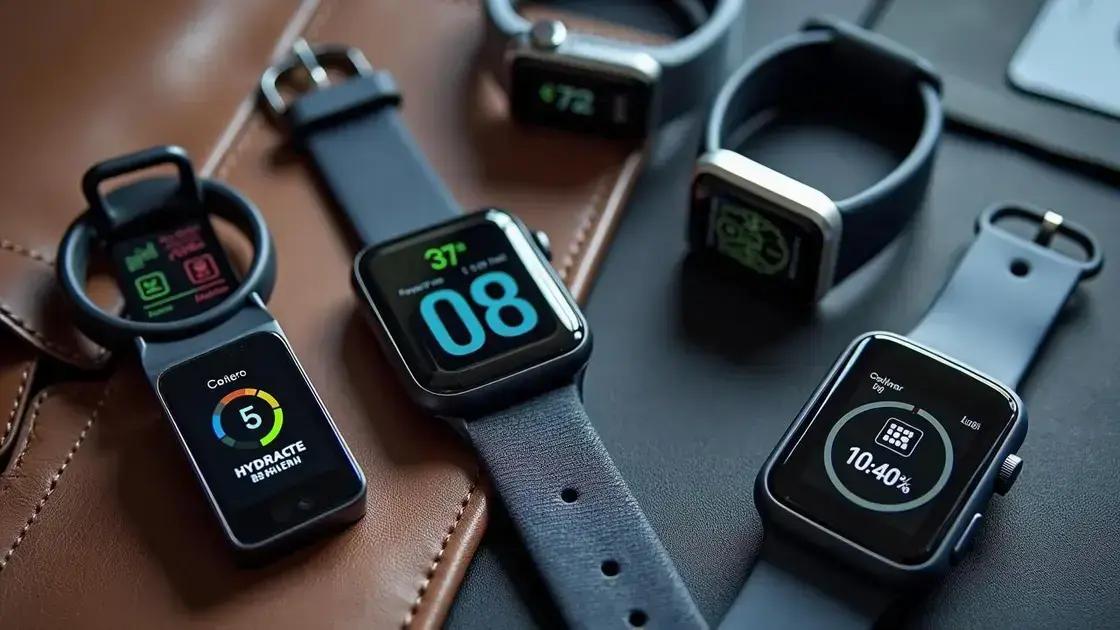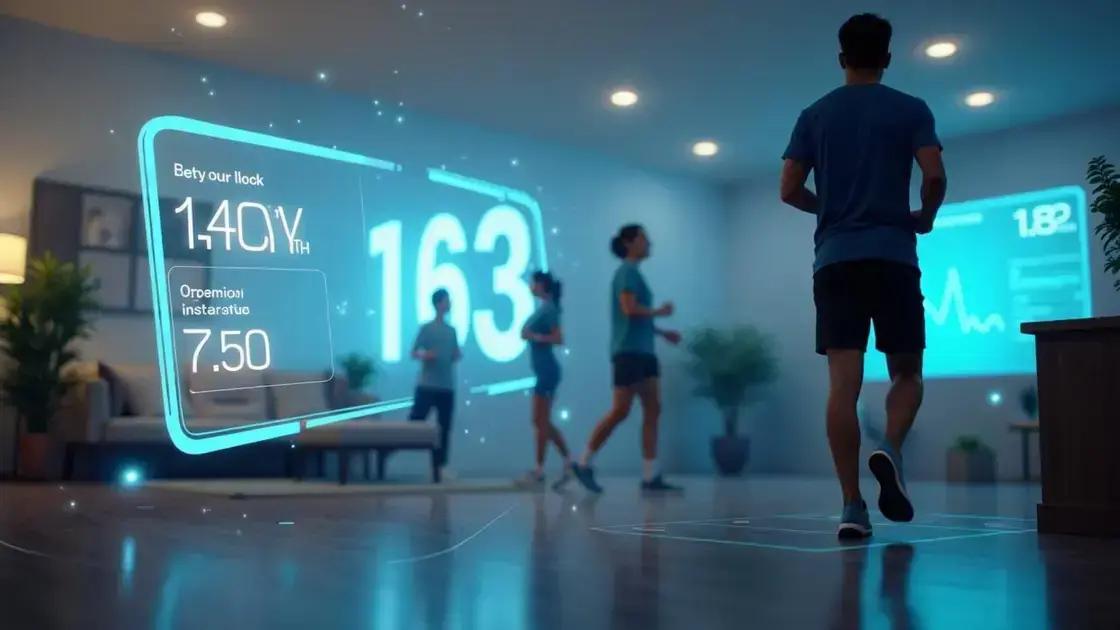Wearable devices are enabling men to track hydration levels through advanced sensors and real-time data analysis, enhancing overall health and athletic performance while promoting healthier hydration habits.
Staying hydrated is essential for overall health and wellness, particularly for men who are active or on the go. Today, wearable devices are revolutionizing the way we monitor hydration levels, making it easier than ever to maintain optimal fluid balance. By utilizing technology, these devices provide real-time insights into hydration status, encouraging healthier habits and enhancing physical performance. In this article, we’ll explore the importance of hydration tracking, how wearable devices function, the top options available for men, and what the future holds for hydration monitoring technology.
The Importance of Hydration Tracking
![]()
Hydration is crucial for maintaining optimal health and well-being. Tracking hydration levels is especially important for men, who may have higher fluid needs due to muscle mass and physical activity. Dehydration can lead to fatigue, reduced performance, and various health issues, such as kidney stones.
Why Men Should Monitor Hydration
Men are generally more active and may sweat more, making hydration tracking essential. Keeping hydrated can improve energy levels, enhance cognitive function, and support athletic performance. It also helps in digestion and temperature regulation.
Consequences of Dehydration
Dehydration affects the body in many ways. Symptoms may include headaches, dizziness, and confusion. Severe dehydration can lead to serious complications, including heat-related illnesses. Thus, monitoring fluid intake ensures that hydration needs are met consistently.
How Hydration Affects Performance
Proper hydration plays a vital role in physical performance. Studies show that even a small decrease in hydration can impair endurance and strength. By tracking hydration levels, men can manage their water intake effectively to enhance their performance during workouts or sports activities.
How Wearable Devices Work

Wearable devices have transformed the way individuals monitor their health and fitness, including hydration levels. These devices use various sensors to track specific metrics related to fluid intake and loss.
Types of Sensors
Common sensors in wearable technology include galvanic skin response, thermometers, and accelerometers. Galvanic skin response sensors measure moisture levels on the skin, which can indicate hydration status. Temperature sensors help assess sweat production, while accelerometers track physical activity levels.
Data Collection and Analysis
Once the sensors collect data, wearable devices process this information to give users a clear picture of their hydration needs. Many devices connect to mobile apps that display real-time statistics and offer personalized recommendations. This enables users to understand how their hydration levels change based on activity, weather, and dietary factors.
Integration with Other Features
Many wearable devices also integrate features like heart rate monitoring and activity tracking. This comprehensive approach allows users to see how hydration interacts with various aspects of their health. For instance, links between dehydration, increased heart rate, and decreased physical performance can be monitored effectively.
User Engagement
Some devices send notifications or reminders to encourage users to drink water throughout the day. By utilizing gamification techniques, they can make hydration tracking more engaging and fun, thus promoting healthier habits.
Top Wearable Devices for Men

Choosing the right wearable device can make tracking hydration easier and more efficient. Here are some top wearable devices specifically designed for men that help monitor hydration levels.
1. Garmin Forerunner 245
This smartwatch is perfect for runners and fitness enthusiasts. It features advanced performance metrics and tracks hydration through its paired app. The Garmin Connect app helps users log their water intake easily.
2. Fitbit Charge 5
The Fitbit Charge 5 offers comprehensive health tracking, including hydration monitoring. It integrates hydration reminders to keep users on track with their water consumption and offers a sleek design for everyday wear.
3. Apple Watch Series 8
The Apple Watch Series 8 not only tracks various fitness metrics but also allows users to log their fluid intake. With customizable reminders, it encourages hydration based on the user’s activity levels and personalized goals.
4. Whoop Strap 3.0
This subscription-based device is geared toward athletes. The Whoop Strap 3.0 tracks physiological metrics and can help athletes understand their hydration needs based on strain and recovery levels, thanks to its comprehensive data analysis.
5. Polar Vantage V2
The Polar Vantage V2 is a high-end multisport watch that tracks hydration, among other metrics. Its advanced training features help men understand how hydration impacts their performance, making it a valuable tool for serious athletes.
Future Trends in Hydration Monitoring

The future of hydration monitoring is bright and full of innovative technologies. As more people recognize the importance of staying hydrated, wearable devices are evolving to provide even better insights into hydration levels.
1. Advanced Sensor Technology
Future wearable devices will likely incorporate more advanced sensors that monitor hydration in real-time. Innovations like biosensors may provide accurate information about sweat composition, helping users understand their hydration needs better.
2. Integration with Smart Environments
Hydration monitoring is expected to integrate seamlessly with smart home environments. For instance, smart water dispensers may connect with wearable devices to automatically suggest fluid intake based on real-time data from the user.
3. Artificial Intelligence and Personalization
Artificial Intelligence (AI) will play a key role in personalizing hydration recommendations. Wearable devices could analyze an individual’s activity level, weather conditions, and even dietary factors to provide tailored hydration advice.
4. Community and Social Features
The future may also bring community-driven features. Users could share hydration goals and challenges with friends or fitness communities, promoting accountability and engagement. This could encourage healthier habits through mutual support.
5. Data Analysis for Health Insights
Wearable devices may increasingly focus on health insights beyond hydration. By analyzing hydration data alongside other health metrics, users could better understand their overall wellness and make informed decisions about their health.
Embracing Hydration Monitoring for a Healthier Future
As we’ve explored, wearable devices are changing the game for tracking hydration levels among men. From understanding the importance of hydration to the advanced technology in today’s devices, it is clear that staying hydrated is vital for overall health and performance.
The top wearable devices available ensure men can monitor their hydration status effectively, while future trends promise even greater advancements in this field.
By actively engaging with these technologies, individuals can develop better hydration habits and improve their physical well-being. Embracing these innovations is not just about monitoring water intake—it’s about making informed choices for healthier lifestyles.
Incorporating hydration tracking into daily routines can be a game changer, opening the door to enhanced performance, increased energy, and overall health improvement. So, equip yourself with the right wearable device and start your journey toward optimal hydration!
FAQ – Frequently Asked Questions about Hydration Monitoring with Wearable Devices
Why is tracking hydration important?
Tracking hydration is crucial for maintaining overall health, improving energy levels, and enhancing physical performance, especially for active individuals.
How do wearable devices monitor hydration?
Wearable devices use various sensors to track factors like sweat composition and moisture levels, providing real-time data on hydration status.
What are some top wearable devices for men?
Some of the best wearable devices for tracking hydration include the Garmin Forerunner 245, Fitbit Charge 5, Apple Watch Series 8, Whoop Strap 3.0, and Polar Vantage V2.
What future trends can we expect in hydration monitoring?
Future trends include advanced sensor technology, integration with smart environments, AI-driven personalized recommendations, and enhanced community features.
Can wearable devices help remind me to stay hydrated?
Yes, many wearable devices have built-in reminders and notifications that encourage users to drink water throughout the day.
How can I choose the right hydration monitoring device for me?
Consider factors such as your activity level, preferred features, compatibility with your smartphone, and battery life when selecting a hydration monitoring device.












